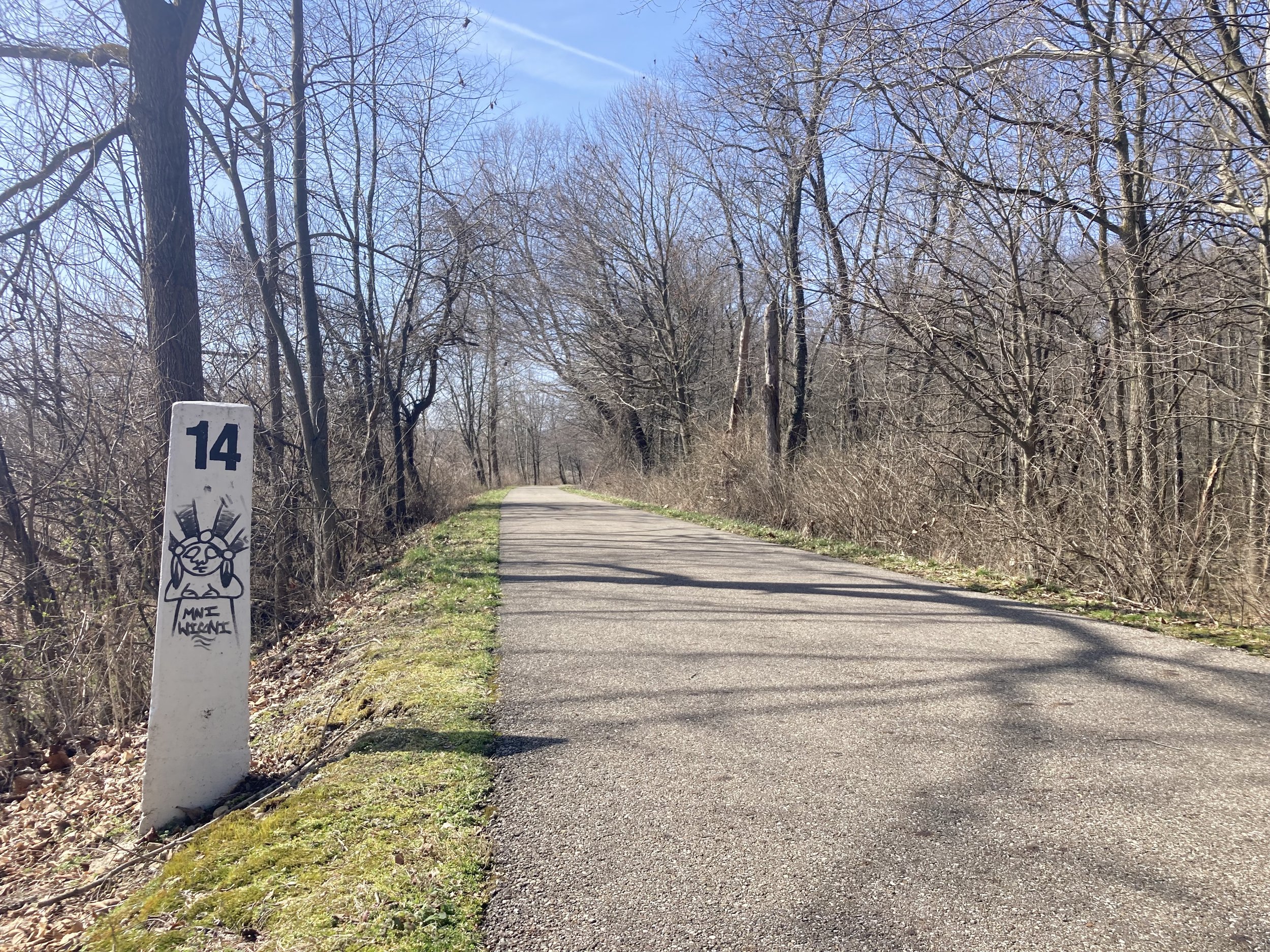Passenger Rail Turned Ohio Trail
Sights along the Heart of Ohio Trail in Knox County. A right-of-way turned through lifetimes. Currently, the 15.7 mile walk/bike trail runs from Mt. Vernon to Centerburg. What later became the trail was formerly the right-of-way for the Cleveland, Akron, & Columbus (CA&C) Railway. In Mt. Vernon, the CA&C served connections eastward towards Millersburg/Holmes County; and to the southwest. Traversing through Centerburg, Galena, and Westerville before terminating in Columbus. Connecting the region’s agricultural power with its economic center and state capital through passenger and freight rail services. It is upon this trail I recently walked that these once bustling rail lines sat. Routes running 18 daily passenger trains through Knox County served mainly by powerhouse Pennsylvania (PRR) and Baltimore & Ohio (B&O) Railroads.
Specifically, Mt. Vernon’s location provided equal access to the economies of Columbus, Cleveland, and Chicago; itself becoming a center for commerce. An increasingly competitive railroading industry fueled steady growth in the regions economy into the 20th century. Allowing for the building new rail stations including; the B&O and CA&C passenger stations in 1907 and 1905, respectively. However, the coming decades of industry consolidation left passenger services set on an overall course of decline fighting a losing battle against the rising popularity of the automobile.
Even still for the time being as the 1920s dawned; an additional north-south Baltimore & Ohio (B&O) route provided service was added in 1907. Two years after CA&C opened their route to Columbus. B&O served routes north to the shores of Lake Erie in Sandusky via Mansfield. Running south from Mt. Vernon; B&O’s line runs to Ohio’s state border at both Marietta and Bellaire. The routes running through Newark before splitting at Zanesville and continuing onto the state border.
1918 State of Ohio Rail Map
The stability of the service wouldn’t last however. By 1930, in the thick of The Great Depression, the number of mail railcars surpassed the number of passenger ones for the first time. The aforementioned 18 daily passenger trains running through the county in 1917, now was down to just two daily trains by 1948; 31 years later. Finally, on December 15, 1950, the now-Pennsylvania Railroad cease passenger rail operations on the route. Removing the last passenger train and only carrying mail and express on the line going forward. A rather somber ending to the service because the year prior, in 1949, a diesel engine derailed and fell over an embankment near Mt. Vernon’s Penn Depot.
Fast Forward to the late 1990s, Knox County began to explore the idea of taking the now-abandoned rail beds and turning them into recreational trails. Fast forward once more to 2021; as Knox County officials announced they will use almost $500,000 from a Clean Ohio Trails Fund to pave 1.07 miles of the Ohio to Erie Trail in the county. Specifically, this segment is the last section of Knox County’s portion of the trail to be paved. Overall, collaborations on the county’s trails have produced a total price tag of $664,000; which notably includes funding for a quarter-mile of trail in Licking County. Ever set to expand and maintain the region's trail system.
Knox County has three different multi-use trails on the Ohio to Erie Trail including;
The Heart of Ohio Trail
Connects western Knox County to Mt. Vernon
Kokosing Gap Trail
Connects Mt. Vernon to Danville
Mohican Valley Trail
Connects Danville to Knox/Holmes County Line
Rails/Trails
There is no doubt the [rails-to-trails] projects serve a fantastic purpose to repurpose what have been waiting to be utilized. While it is true they could be utilized for their original purpose in rail travel. The truth is Ohio, in particular, overbuilt their rail system 100 years ago only to lose it all within that century. Urban blight in the form of abandoned rail infrastructure promotes seedy behavior and general incompetence. Showing to all who gaze how far Ohio has fallen as an industrial giant. So to turn to spaces into places where people are productive, whether that be on a trail or rail, sound alright to me. Ohio, in fact, does this very well. Offering a host of options on their state-wide multi-use trails; many of which are part of the ‘rail-to-trails’ system of projects.
All that being said, my major quarrel with any project turn a railway to a pathway is the feeling of certainty to promote general wellbeing to give it. Put simply, it’s not cut and dry. Just like with railroads, a good trail must have good accessibility and services. Furthermore, if you want the trail to be used more, you must increase the utility. The whole reason why some Norwegians bike to work in the winter is because the systems in place make it a doable thing.
Thank you for reading!






